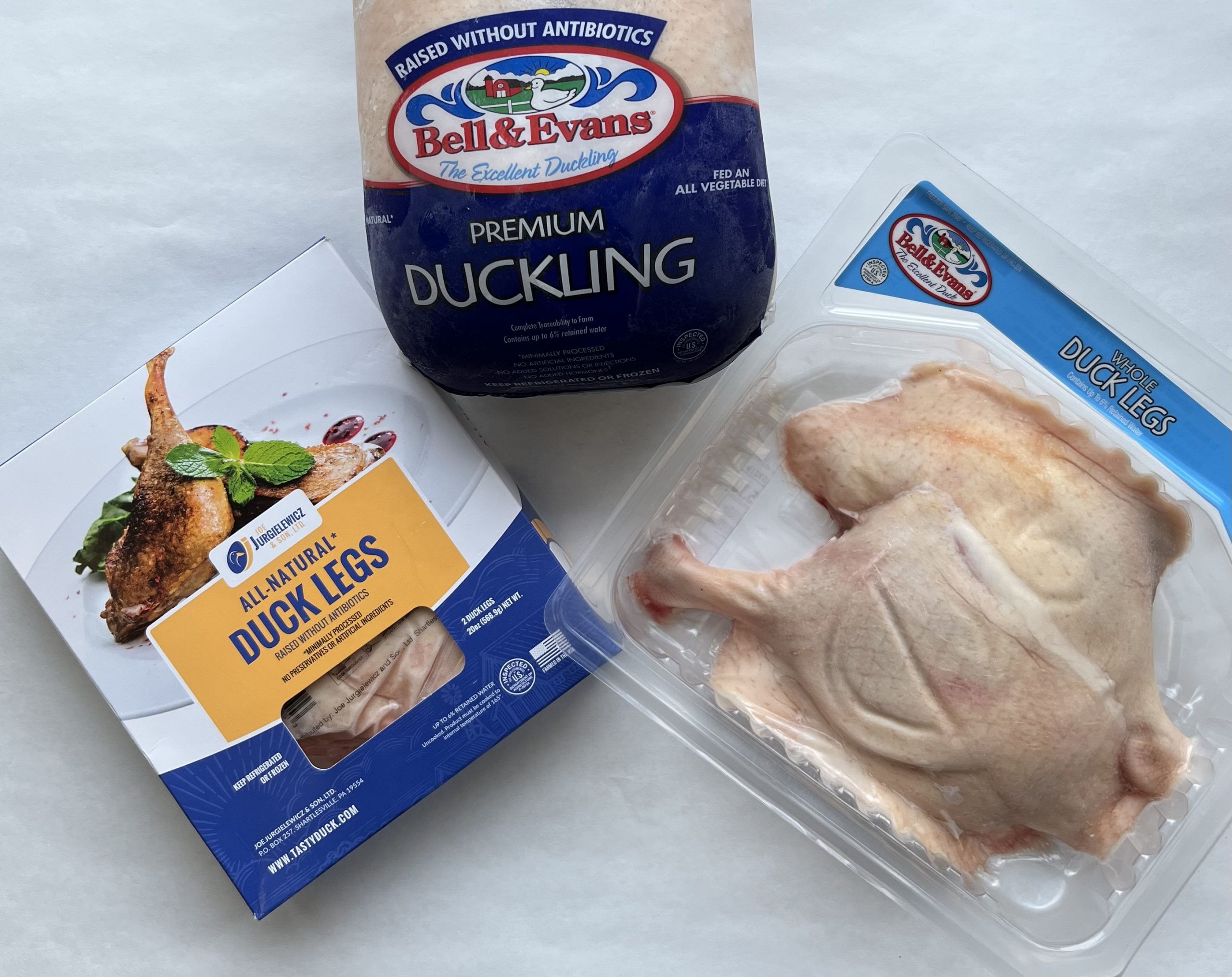
Duck
Duck is an elegant alternative to typical poultry options. It is known for its rich dark meat and thick fatty skin, coming together for well-rounded flavor in every bite. In the culinary world, duck is considered as part of the red meat category despite being in the poultry family. This impacts the methods and processes of cooking duck, which you can read more about below. Often used in high-end dishes, such as Duck Confit or Peking Duck, we want to bring this delicacy to your weekly dinner table. Keep reading to see what cuts of this luxurious poultry we carry in our Exotic Meats frozen section.
What’s the Difference in Each Cut?
To give as diverse of a selection as possible, we carry the following cuts in our Exotic Meats frozen section:
- Duck Breast
- Lower in calories and inter-muscular fat than chicken or turkey
- Has a thick flavorful fat cap attached to one side of the breast
- Has a similar texture and color to red meat
- Duck Legs
- Smaller than turkey legs
- Have a rich, fatty flavor and juicy texture
- High in iron and monounsaturated fats
- Whole Duck
- Can weigh anywhere between 4-8 pounds
- 8 pounds is good for feeding 4 people maximum
- Versatile usage in many cuisines
- Great alternative for holiday roasts
- Can weigh anywhere between 4-8 pounds
How Should I Prepare Each Cut?
Different cuts require different attention and cooking processes. Some cuts, like the breast or legs, are better for small meals. Whole duck on the other hand is much better for special dinners for small groups. Let’s learn some more!
- Breasts
- Score the breast with shallow diagonal cuts across the fat cap. This will help the fat render better and leave you with a wonderfully crispy skin.
- Add the duck to a cold pan and cook over medium heat under seared well on both sides.
- You will want to sear the fat/skin side first. The meat side will take less time to achieve the same sear you made on the fat cap side.
- Many culinary experts say duck breast is best when cooked medium-rare so it doesn’t dry out the meat, about 130°F internal. However, the USDA recommends all poultry products be cooked to a minimum of 165°F minimum.
- Legs
- Can be prepared in many ways, the most popular methods being smoking or confit.
- Best cooked low and slow due to their high fat content and muscular structure. This helps the meat break down and end up as a tender final product.
- Need to cook longer than breasts.
- Whole
- Best method of cooking is oven-roasting, same idea as roasting a whole chicken or turkey (but smaller)
- You may want to thaw our frozen whole ducks in the fridge for 36-48 hours before cooking.
There are other methods that work for all three of the cuts we carry, but these are the most popular and our top personal recommendations.